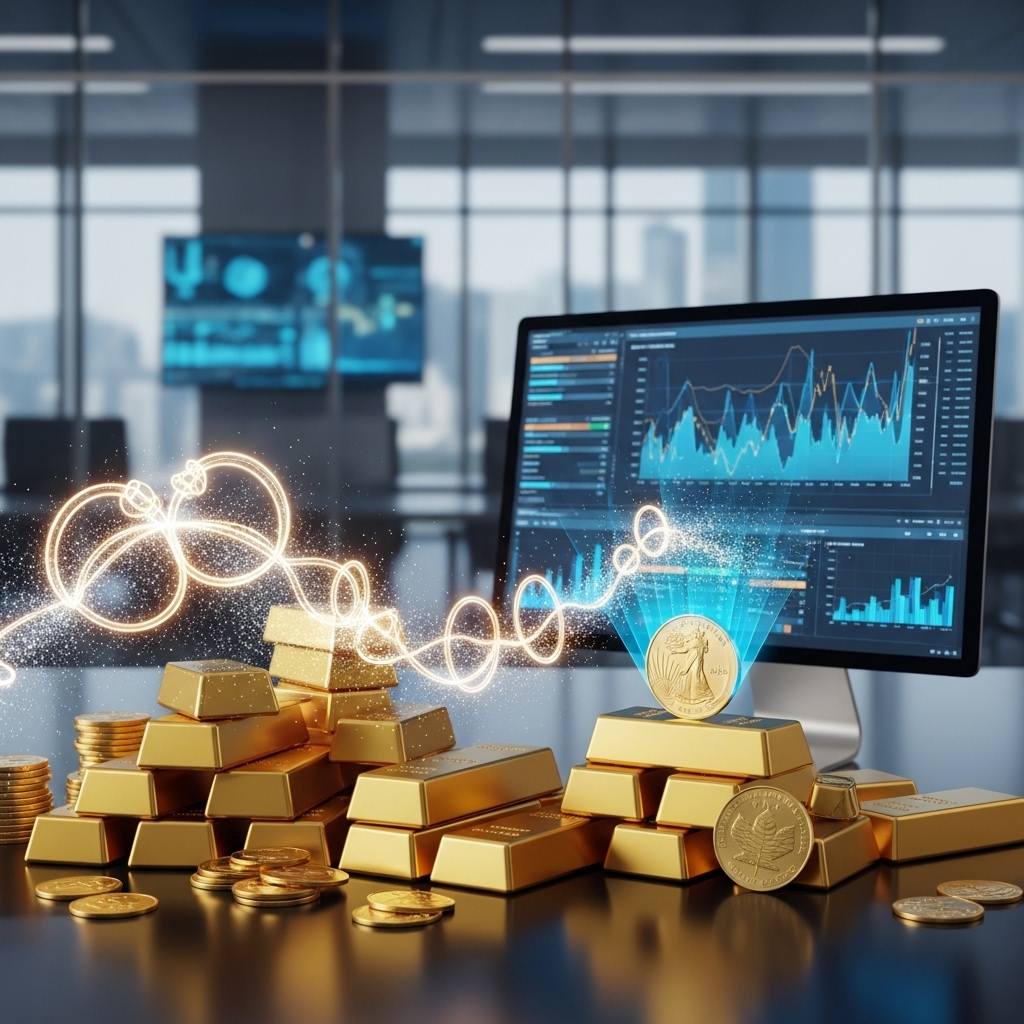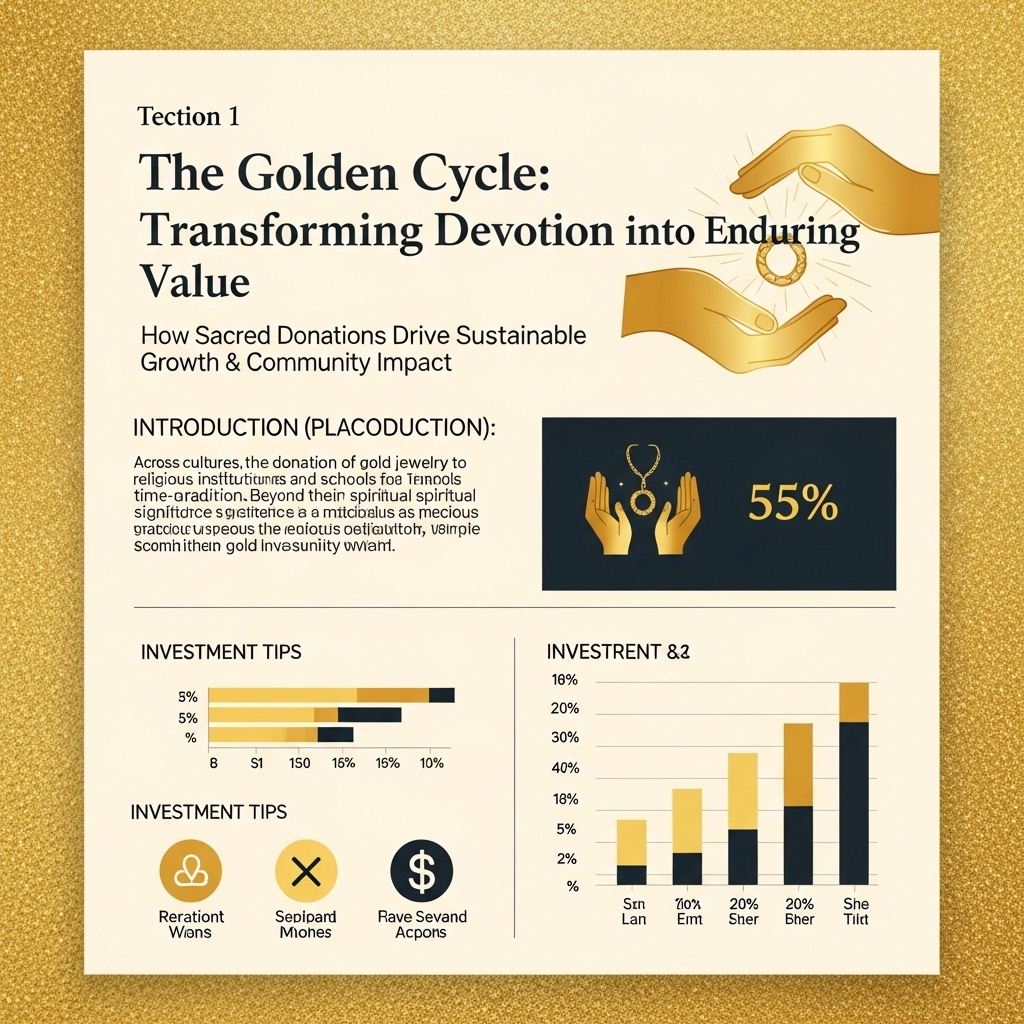Unearthing Hidden Gold Flows: How Religious and Educational Institutions Impact Your Portfolio
As gold consolidates its position as a critical inflation hedge and safe-haven asset, recently flirting with all-time highs, astute investors are looking beyond traditional market analyses. While we diligently track central bank purchases, mining output, and ETF flows, a vast, often overlooked, reservoir of gold exists within religious institutions and missionary schools. This unique source of liquidity, stemming from generations of donated gold jewelry, plays a subtle yet significant role in the broader gold ecosystem. Understanding these unconventional gold flows can offer a distinct edge in refining your investment strategy.
This post will delve into the fascinating world of how missionary schools and temples ingeniously reuse donated gold jewelry, transforming it from personal adornment into institutional assets. We’ll explore the mechanisms of collection, refinement, and strategic deployment of this gold, whether it’s converted into financial capital for educational programs, used as collateral, or even re-entered into the market in various forms. For the gold investor, this isn’t merely a niche topic; it’s a vital examination of alternative supply channels and demand pockets that significantly influence market trends and overall gold liquidity.
Recognizing how substantial quantities of gold circulate and are repurposed outside traditional financial markets offers a deeper, more holistic picture of the precious metal’s market resilience and underlying supply-demand dynamics. By factoring in these less visible gold flows, you can gain a more sophisticated understanding of gold’s true market breadth, better anticipate movements, and potentially spot financial opportunities others might miss.
Gold Market Analysis and Key Insights
Religious institutions, including missionary schools and temples, accumulate substantial value through donated gold jewelry. Rather than merely a material asset for specific ceremonial purposes or immediate liquidation, this gold inherently functions as a significant investment portfolio component, requiring strategic management aligned with the institution’s long-term financial stability and mission.
Key Market Insights
Gold as a Safe Haven Asset: Gold historically performs exceptionally well during periods of economic instability, geopolitical tensions, and market volatility. For institutions with long-term financial stability goals, holding gold provides a crucial hedge against unforeseen crises, preserving capital when traditional investments falter.
Inflation Hedge and Diversification: Gold serves as an effective hedge against inflation, maintaining purchasing power as fiat currencies depreciate. Integrating gold into an institution’s financial strategy offers excellent portfolio diversification, reducing overall risk by counterbalancing more volatile assets like stocks or bonds, which can be crucial for endowments or long-term operational funds.
Current Gold Market Trends and Data
Currently, the gold market is experiencing elevated prices, driven by persistent inflationary pressures, global uncertainties, and sustained central bank buying. Recent data indicates strong global demand, pushing prices towards new highs. While subject to short-term fluctuations, the underlying trend suggests gold’s continued relevance as a store of value amidst a shifting global economic landscape.
Investment Benefits and Considerations
The primary benefits for institutions include gold’s high liquidity (if converted), its tangible nature, and its potential for long-term capital appreciation. However, considerations include the costs and risks associated with storage and security for physical assets, the lack of direct yield (unlike dividends or interest from other investments), and market volatility. Institutions must also consider public perception and ethical implications when converting donated sacred items into liquid assets.
Expert Recommendations
Financial experts advise institutions to approach gold not merely as a donated item but as a strategic asset. Recommendations include establishing clear, transparent policies for gold valuation, conversion, and reinvestment. Diversifying the broader investment portfolio and considering professional asset management to optimize returns are crucial. A long-term holding strategy for a portion of the gold asset, coupled with a transparent liquidation process for operational needs, is often suggested to leverage its safe-haven properties while ensuring financial flexibility.

Gold Investment Strategies and Options
Missionary schools and temples, entrusted with donated gold jewelry, can strategically convert or hold this asset for long-term benefit, transforming it from a static donation into a dynamic financial resource. Understanding various gold investment avenues is crucial for maximizing its potential while prudently managing associated risks.
Physical gold, whether held as bullion (bars/coins) after melting or as the original jewelry, offers direct ownership and a tangible store of value, though it incurs significant storage, insurance, and security costs. Alternatively, the gold can be sold to invest in Gold Exchange Traded Funds (ETFs). These provide excellent liquidity, ease of trading, and diversification without physical storage burdens, though they carry management fees and some counterparty risk. A third avenue involves investing in gold mining stocks, which offer potential for capital appreciation and dividends. However, this introduces company-specific risks and equity market volatility, making it less a pure gold price play.
When assessing risk and allocating assets, gold typically serves as a hedge against inflation and economic uncertainty, suggesting a prudent allocation (e.g., 5-15%) within a broader endowment or operational fund. Physical gold, while secure against systemic collapse, offers lower liquidity for immediate needs. ETFs provide high liquidity and market access, while mining stocks carry the highest risk-reward profile. Market timing considerations for these institutions should generally favor a long-term, strategic accumulation or holding approach rather than speculative trading. Regular portfolio rebalancing ensures the gold allocation aligns with the institution’s long-term financial objectives and risk tolerance, thereby transforming donated gold into a resilient asset that supports their enduring mission.
Market Performance and Outlook
Historically, gold has served as a resilient store of wealth, a critical characteristic for the enduring endowments of missionary schools and temples. For centuries, donated gold jewelry has constituted a significant, albeit often unquantified, asset pool for these institutions. Its value has reliably appreciated over the long term, acting as a natural hedge against inflation and economic volatility. For instance, gold’s value surged over 400% in the past two decades, demonstrating its robust performance.
Currently, the global gold market is experiencing elevated valuations. Geopolitical tensions, persistent inflationary pressures, and continued central bank buying have pushed prices near historical peaks. This robust environment significantly enhances the financial viability of institutions’ gold reuse programs, allowing them to monetize donated assets efficiently for operational funding, charitable initiatives, or infrastructure development.
The future outlook for gold remains broadly positive. Ongoing global uncertainties, potential de-dollarization trends, and sustained investor demand for safe-haven assets suggest continued strong performance. While donor volume for religious institutions can fluctuate, the enduring cultural and spiritual significance of gold donations, coupled with a favorable market, ensures a consistent influx of material. Economic factors like interest rate decisions, currency strength, and global stability will continue to be pivotal determinants of gold prices, directly impacting the financial leverage derived from these invaluable donated assets.
Frequently Asked Questions About Gold Investment
What happens to gold jewelry donated to religious institutions?
Donated gold is typically sorted. Most is melted down, then sold to fund operations, re-crafted into new religious artifacts, or used for temple maintenance and community programs.
Does this practice affect the broader gold market or supply?
The volume of gold recycled by religious institutions is minor compared to global supply. It has virtually no discernible impact on overall gold market supply or prices.
Is there transparency in how these gold donations are managed?
Transparency varies. Larger institutions may include precious metals in public reports. Smaller entities often provide less detail. Investors should research individual institution practices.
Do institutions use donated gold to acquire new gold investments?
While primarily for operational needs, institutions could sell melted gold and reinvest proceeds into various assets, including new gold holdings, as part of broader financial management.
Are there ethical considerations for investors supporting this system?
Ethical concerns typically focus on transparency and fund use. If an institution’s practices align with an investor’s values regarding charity or community, it’s often viewed positively.
Could large-scale religious gold recycling ever influence future gold prices?
Highly unlikely. Religious gold is a fraction of total above-ground gold. Any market impact would be temporary and localized, not a long-term price driver.

Final Thoughts on Gold Investment
As we’ve explored, gold’s journey extends far beyond market trading floors, finding profound utility and a new lease on life within missionary schools and temples. For the astute investor, this deep dive reveals gold’s unparalleled resilience and intrinsic value; it’s an asset not merely hoarded, but actively repurposed to fund education, welfare, and spiritual causes. This societal fluidity underscores gold’s enduring liquidity and its role as a stable store of wealth, capable of retaining value across diverse economic landscapes and even serving philanthropic ends.
Therefore, whether you’re safeguarding against inflation or seeking portfolio diversification, gold remains a timeless and strategic investment. Its multifaceted utility, demonstrated even in these unique reuse models, solidifies its position as a reliable haven. Don’t just observe gold’s legacy; make it a part of your financial future.